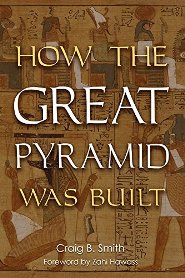| Main » Ad Board » ДРЕВЕН ЕГИПЕТ И АФРИКА » Архитектура |
| 20.06.2019, 20:55 | |
Модерно проучване за начина по който древните египтяни са построили Великата пирамида на фараона Хуфу (Хеопс) в Гиза от гледна точка на съвременния системен инженеринг. АЛТЕРНАТИВЕН ЛИНК / ALTERNATIVE LINK: Craig B. Smith - How the Great Pyramid Was Built, Washington DC, Smithsonian Books, 2018 - на английски език, от MEGA, формат PDF.Сваляне с ляв бутон (downloading by left button) и после през бутона Download. АЛТЕРНАТИВЕН ЛИНК / ALTERNATIVE LINK: Craig B. Smith - How the Great Pyramid Was Built, Washington DC, Smithsonian Books, 2018 - на английски език, от MEGA, формат EPUB.Сваляне с ляв бутон (downloading by left button) и после през бутона Download.
| |
| Views: 1036 | Placed till: 20.10.2024 | Rating: 0.0/0 | |

